Archived Commercial Blog Posts
Can I Save My Commercial Property After Water Damage?
7/31/2022 (Permalink)
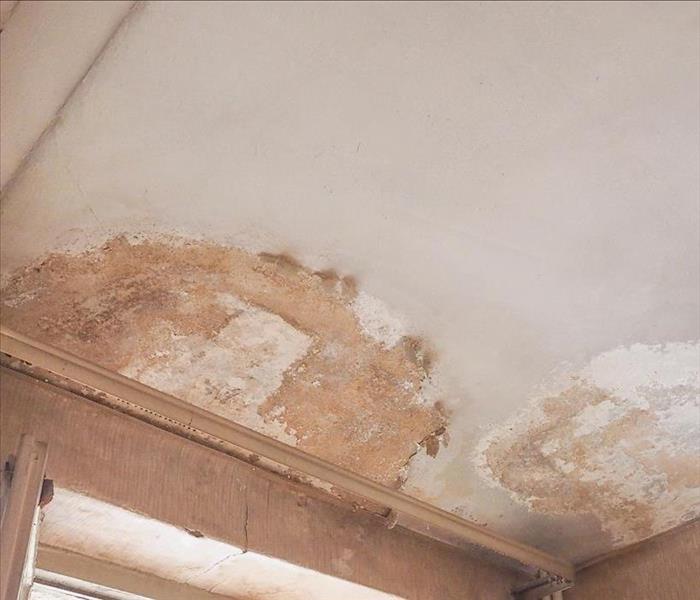 Water damage in St. Paul, MN.
Water damage in St. Paul, MN.
Unfortunately, some type of water damage is always possible at your Saint Paul, MN, commercial building, no matter where it's located. From bad weather to a leaking pipe to a sewer backup, it's helpful to know what to do in a water disaster. Even a little moisture left to linger can become a significant loss. Therefore, it's essential to mitigate the damage as quickly as possible upon discovering the flood.
Water Cleanup and Restoration Tips for Your Commercial Property
1. Protect Yourself
Safety is the first factor to consider when dealing with a flood. It's essential to shut off the electricity before anyone goes into the affected area. If you can't safely navigate to the breaker box, call an electrician or the electric company to shut it off before you make another move because an electrical current could be flowing through the water. Depending on the type of flood you have on your hands, you may need to consider wearing personal protective equipment (e.g., safety glasses, facemask, rubber gloves) to clean.
2. Eliminate the Standing Water
Once the area is safe to enter, the best option, if you have it, is using a wet/dry vacuum. This is typically the safest and most efficient way to extract standing water. If you don't have a wet/dry vac accessible, grab a mop, bucket, and some towels.
3. Clear the Area
Next, it's time to clear out the affected area as much as possible. This will give you more room to clean, find the extent of damage, sort through your contents, and allow for more airflow for drying. If the outdoors is less humid than indoors, you can place the contents outside to begin drying in the fresh air and sun.
4. Inspect for Damage
Hiring water damage restoration professionals to perform a thorough inspection and remediation can be very beneficial. They have the expertise and equipment to ensure the building is returned to its pre-flood condition.
5. Determine What Is Salvageable
Sort through your property to determine what is salvageable and what isn't. Many of the porous materials will probably be ruined. However, professionals can sometimes use special techniques to restore these items, even books and photos.
6. Dispose of the Unsalvageable
If you've had standing water on hardwood, laminate or carpeted flooring, it probably won't be salvageable as it won't be possible to dry them quick enough to prevent significant damage, such as warping, buckling and mold growth. Some parts of your drywall will likely have to be cut out and replaced because drywall is porous and can soak water up like a sponge.
7. Clean and Sanitize Everything Thoroughly
Everything must be cleaned and sanitized thoroughly, especially if the flood results from broken pipes like sewer lines and contains harmful bacteria or other toxic substances. You will need to clean every surface that the water has touched.
8. Dry Everything Thoroughly
Finally, everything must be dried completely within 24 hours of its exposure to water. You can use fresh air, dehumidifiers, fans and heaters to help the process.
Water damage can take over immediately and do increasingly more damage every minute that passes. Fortunately, there are ways to prepare so you can start water cleanup immediately should the worst occur.
Fire Damage in Your Rental? Who Pays for Apartment Fire Losses?
7/26/2022 (Permalink)
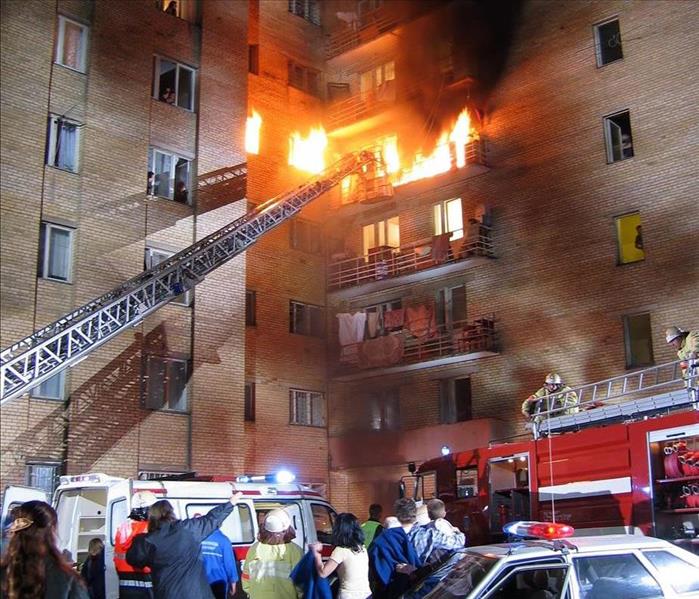 Apartments on fire.
Apartments on fire.
An apartment fire starts and spreads quickly, harming the interior and exterior of your space. Once crews extinguish the blaze, you and your renters in Saint Paul, MN, are left to face the repairs and discuss the losses. Who is in charge of damage? All parties must understand their roles in gaining compensation and restoring the premises.
How To Seek Compensation for Apartment Fire Loss
Rental property claims differ from a standard home policy that handles structural and content loss. In apartment buildings, the roles become divided. The landlord has some obligations; the tenant has some as well. The building falls on the owner's shoulders. The contents belong to the renter. Therefore, there is a line breaking up the payment roles. Read more to learn who is responsible for the financial obligations of the repair process.
What Are the Landlord's Obligations?
When determining who pays for fire damage, it's essential to think of the property in two ways: the structure and personal items. The landlord owns the land, including the building on top. Therefore, it falls on the owner's plate to correctly handle the property. These tasks fall under ownership:
- Opening an insurance claim for fire repairs
- Working with a fire restoration company to assess physical conditions
- Initiating remediation and restoration projects
- Finding a suitable, habitable place for tenants to reside
Fire demands careful attention. The sparks result in multiple factors that require attention, such as water, smoke and odor. It's imperative to fix and test them before permitting people to return. Property insurance claims often cover the cost of rebuilding and cleaning, so owners should diligently work with their insurance agents to discuss policy coverage and how to receive financial compensation.
What Are the Tenant's Obligations?
In an apartment fire, the landlord likely didn't have personal property in the unit. The building's coverage doesn't extend to the tenant's items. Instead, the renters must seek financial aid from their own insurance policy, requesting payment for content damage.
Without renter's insurance, those living there cannot receive payment for lost goods or items. For those with the policy, it's essential to notify the agent, establishing a personal loss claim immediately. The agent assesses the situation and can cut a check. The fire remediation experts should snap pictures of the destruction, including furniture, electronics and personal items. Tenants can submit these images and the crew's report to the insurer to validate the request.
Are There Any Exceptions to These Rules?
Landlords often require tenants to sign a contract mandating certain safety precautions. For instance, renters shouldn't overload circuits or leave candles unattended. When the renters fail to follow those guidelines, the landlord's insurance could find the tenant at fault. Then, the fire cleanup costs turn to the tenant and not the landlord.
Most often, the landlord still files with the building's insurer. The agency pays for the repairs, but the group works with the tenant's party to reclaim the funds.
When your rental property in Saint Paul, MN, suffers an apartment fire, the landlord's responsibility is to provide tenants with a safe place to live and fix the building.
What Insurers Should Look for in a Professional Restoration Company
5/23/2022 (Permalink)
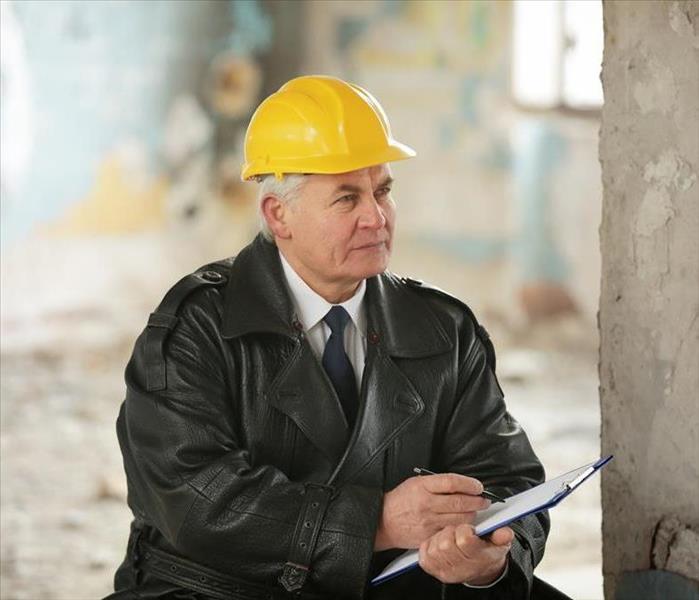 A Professional Restoration Company is always the Best Option.
A Professional Restoration Company is always the Best Option.
Commercial property owners understand the importance of taking care of their real estate investment. A critical component of property care is securing insurance to protect against damages and losses due to fire, water, theft, and other natural disasters. These owners look to insurers like you to provide insurance coverages that protect them from typical threats and exposures.
In the event of major damage to the building, your clients look to their insurance adjuster or representative for guidance on cleanup and repairs. Here’s what you should know about choosing a professional restoration or remediation company to recommend.
Efficient Insurance Claim Handling
Filing a claim can be quite stressful for your clients, so it’s important to find a restoration services provider that makes your clients a priority. A SERVPRO franchise in White Bear Lake, MN, brings you experienced professionals who understand that taking care of your clients is the best way to take care of you. Bringing a client’s building back to pre-damage conditions and minimizing the time it takes to do so is the main focus. Working with you to expedite claim processing helps you serve customers that rely on you.
24-7 Availability
Property damage is never convenient, and emergency situations are even less so. Whether it’s sewage backup or a blazing inferno, you need to partner with a team that can respond to emergencies whenever they arise. Your local franchise is available 24 hours a day and 7 days a week to meet an insurance adjuster onsite and/or start the remediation process immediately, doing what’s necessary to help your customers’ properties get back to normal as soon as possible.
A Comprehensive Approach
Restoring a building back to pre-damage conditions requires a comprehensive suite of services that cover the insured’s needs. You can expect your local SERVPRO franchise to offer the following:
- Safe, careful removal of damaged items
- Special cleaning methods for electronics, documents, fabric and upholstery, and more
- Thorough drying and dehumidifying of items as necessary
- Disinfection of items affected by black water and gray water
- Remediation of mold and mildew
- Boarding up portions of the structure to prevent further damage
- Structural repairs and reconstruction
- Offsite storage of items during cleanup and repair
Although no two restoration jobs will be the same, you can be confident that your preferred provider has the experience, expertise, and equipment for a complete job.
Controlling Claims
Replacing an item is often more expensive than repairing or cleaning it. The cost to replace every item can quickly add up, resulting in an insurance claim that may be much larger than necessary. SERVPRO looks for ways to repair and clean, before replacing. This helps to control the size of your claims, a benefit to both the insurer and the insured.
At the end of the day, policyholders want to get back to business as quickly as possible. Your representative insurance adjuster wants to minimize the size of the claim.
It’s important to partner with an experienced restoration services provider that can start quickly and find the most efficient and cost-effective ways to return the covered property to pre-damage conditions. Do what’s best for your clients by recommending professionals they can trust.
How Fire Damage Causes Water Damage
5/12/2022 (Permalink)
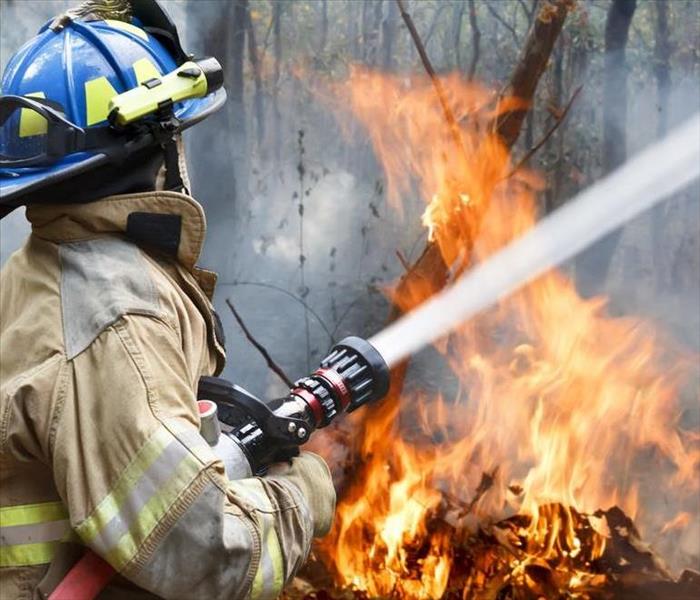 Fire Damage can also Cause Water Damage. For more Information, just Contact Us.
Fire Damage can also Cause Water Damage. For more Information, just Contact Us.
When a fire occurs, most property owners expect to have fire damage. However, what they may not expect is the amount of water damage that can occur due to the efforts to put out the flames.
Dealing With Water Damage
Dealing with damage from fire and water is a multi-step process.
Inspect Your Damage
Even if firefighters mostly sprayed water in one area of your building, water from a fire hose can seep into unexpected places causing damage. There are several areas where water damage is common:
- Drywall can soften or swell after absorbing water
- Ceilings may swell, stain and lose strength
- Water can cause shorts and other problems in electrical systems
- Wood floors may buckle and swell
- Wood framing may rot
Additionally, most surfaces can develop mold and mildew after being exposed to water. This is particularly true of surfaces that may take a long time to dry, such as the padding or subfloor under wet carpet. Contacting a fire remediation company in White Bear Lake, MN, to dry out your building after a fire may avoid mold and mildew growth.
Contact Your Insurance Company
Damage from water used to put out a fire on your property is usually covered by fire insurance. Contact your insurance company to get the claims process started.
Document Your Damage
The insurance company will probably send an adjuster to inspect your fire damage. However, it is still a good idea to have your own documentation in case a dispute arises or the adjuster misses something. Take photos or videos of all the damaged areas. Create an inventory of everything that was damaged or destroyed by fire or water.
Start gathering any documentation you have that establishes the value of the damaged property.
Remove Wet Items
The longer wet items stay in your building, the more likely you are to have a mold problem. Remove wet contents, drywall, carpet, insulation and other materials from the building. Place salvageable items outdoors to dry if the weather permits it. Open windows and doors to allow air to circulate.
Clean and Disinfect
Once damaged items have been removed, the property needs to be cleaned and disinfected. If you have a lot of damage, you may need to hire professional cleaners to assist you.
Inspect and Replace Seals
Standing water can weaken the seals around toilets, bathtubs and appliances. Check seals and replace them as needed.
Stay Safe
Do not enter your fire-damaged property until authorities say it is safe. Fire and water can cause structural damage that may make some buildings or rooms unsafe to enter. Do not operate damaged appliances or other electrical equipment until they have been inspected and repaired. Wear protective gear, such as rubber gloves, masks, respirators and protective eyewear.
Because most property that has experienced a fire will have both fire damage and damage from efforts to put out the fire, it is important to have a plan for dealing with multiple types of damage. Quick action is needed to avoid unnecessary additional damage.
How Business Interruption Insurance Can Limit Your Losses After a Fire
4/13/2022 (Permalink)
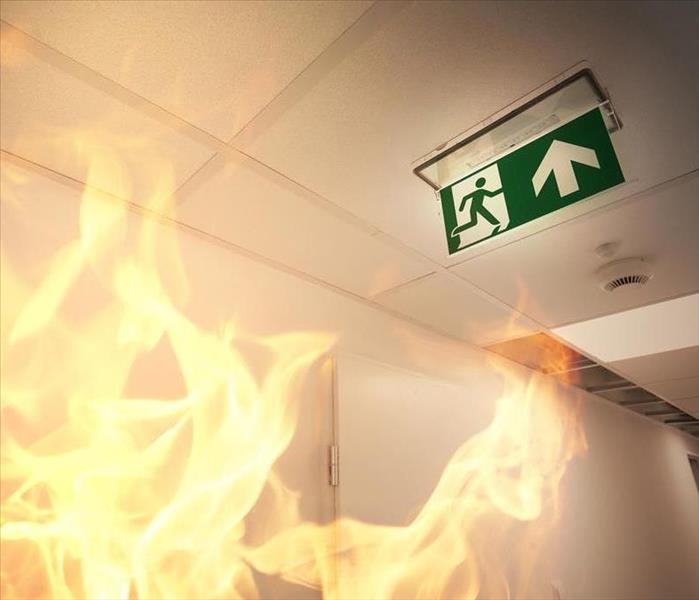 Know More about Business Interruption Insurance by Following These Tips.
Know More about Business Interruption Insurance by Following These Tips.
A commercial fire can be harmful in multiple ways. Obviously, a blaze puts you and your workers at risk. Even if everyone does come out of the disaster unscathed, you will then have to start the fire restoration process.
Top fire cleanup experts can get your property back to normal quickly. However, you may still have to shut down your White Bear Lake, MN, business for several days during the remediation.
To limit the harm that this closure does to your company, you should purchase business income insurance, which is also called interruption insurance.
Why You Need Business Interruption Coverage
The National Fire Protection Association determined that indirect property losses from fires cost $1.9 billion in 2014. This included $0.46 billion in indirect damage to industrial and manufacturing facilities, and $0.17 billion in indirect damage to other non-residential structures.
Business interruption coverage can alleviate some of these costs. This type of insurance typically covers the following:
1. Lost Profits
The insurance policy will give your company the amount of money it would have earned had the fire not occurred. Insurance providers base these payouts on the prior month's documented income. Any earnings not listed on your financial records will be excluded. It is thus important to keep track of exactly how much profit you make each month.
2. Extra Expenses
While your business headquarters is being repaired, you may have to temporarily move your company to a new location. Interruption coverage can pay for the cost of renting this new facility. Your policy may also help you replace damaged machines.
3. Operating Expenses and Employee Wages
Most interruption policies cover business operating expenses and other fixed costs involved in running your company. This includes the wages and/or salaries for your employees. After all, your workers may not want to return to the job unless they are getting paid.
4. Loan Payments and Taxes
Your lenders likely will still want their monthly payments even if a fire has damaged your business. Interruption coverage should cover the costs of those loans and ensure you can pay your business taxes on time.
What Is Not Covered Under Business Income Insurance
Unfortunately, not all business-related losses are included in interruption insurance. Damage caused by earthquakes and floods, for example, is usually part of a separate policy. Business income insurance also will not cover the cost of utilities or reimburse you for replacing broken items. However, the latter expense may be part of your main insurance coverage.
How Business Income Insurance Works
Business income insurance is typically added on to a regular commercial policy. The policy usually covers losses from the date of the covered peril to the date the property is back in the same condition it was pre-disaster. This time frame is often called the "restoration period."
Most policies provide a restoration period of 30 days. However, if you are worried about a more severe disaster, you can extend the restoration period to 360 days. Keep in mind that there may be a two to three day waiting period before the coverage begins.
Fires cost companies more than $1 billion in indirect damage each year. With interruption insurance, you can mitigate your losses.
Three Steps To Prevent Flood Damage
3/9/2022 (Permalink)
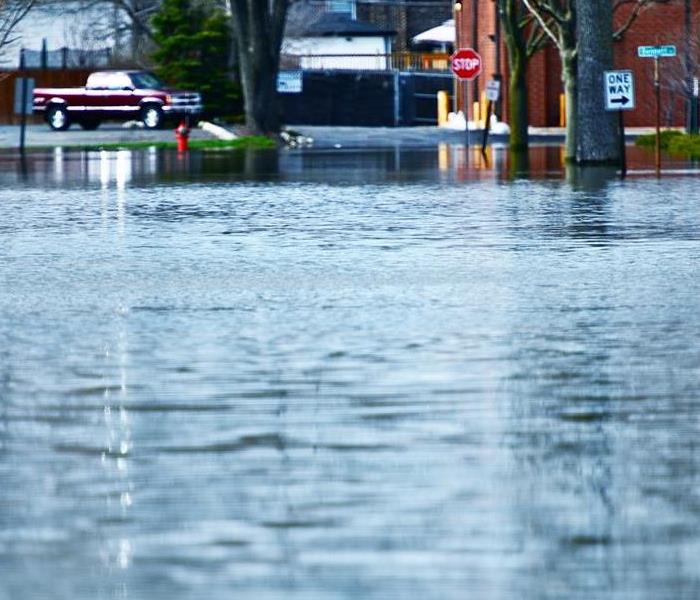 You can Avoid a lot of Flood Damage by Following These Three Steps.
You can Avoid a lot of Flood Damage by Following These Three Steps.
All properties are prone to occasional weather-related damage. Throughout some seasons and in some locations around the country, storm damage is quite frequent. In fact, in the United States, flooding is the most common and most costly product of natural disasters.
There are hardly any regions in the world that are completely immune to weather-related damage. In White Bear Lake, MN, the flood risk is moderate to severe.
Depending on where you live, your risk for flood damage or water damage may be high during certain seasons. Fortunately, no matter which region your building resides in, there are some steps you can take to reduce water damage from infiltrating your building. To combat potential damage, evaluate, prepare, and prevent.
Three Key Steps to Prevent Flood Damage:
Evaluate
First, determine whether or not your property is at risk for flooding, and examine how well your building structure can fare storm damage.
FEMA provides a map that evaluates flood risk by state and city. The flood map divides regions into zones that represent flood risk. orange zones are the least likely to experience damages, then blue zones, followed by yellow zones. The most at risk are blue zones with red stripes.
Orange zones face significant flood risk once every 500 years and are the least at risk for damages. Blue zones face significant flood damage once every 100 years.
Yellow zones represent an unknown flood risk, and if you live in a yellow zone, you should consult with local authorities or neighbors to gauge your property's risk of water damage.
Blue zones with red stripes are the most at risk and require extensive preparation to prevent serious damage. Usually, blue zones with red stripes live near bodies of water.
Understanding what zone type your property resides in will help you to prepare and prevent future water damages.
Prepare
After you pinpoint your property's risk for flood damage, invest in ways you can protect your home from water damage. Some flood renovations are free, while others require maintenance.
For example, if your property is prone to damages, elevate appliances like air conditioning units and water heaters above flood level.
Additionally, research insurance policies even if your property has a low risk of damage. If your property is in a location that is high risk, you should strongly consider investing in insurance.
Prevent
If a storm is coming or has already taken place, take precautionary steps to address water damage on your property.
Shut off your property's electricity if flood water may infiltrate your electrical system. Turn on your sump pump or shop vacuum and remove any water quickly if there is any on your property.
You should turn off water lines, and clear out gutters for water overflow. You may also use sandbags to block gaps that may lead to flooding.
Turn on your sump pump or shop vacuum and remove any water quickly if there is any on your property.
Even if you take prevention steps to reduce risks associated with water damage, some risks will inevitably remain. If you are concerned about potential water damage, call a local storm remediation company that can get to your property quickly and assist you.
How To Keep Your Construction Site Protected Against Water Damage
2/22/2022 (Permalink)
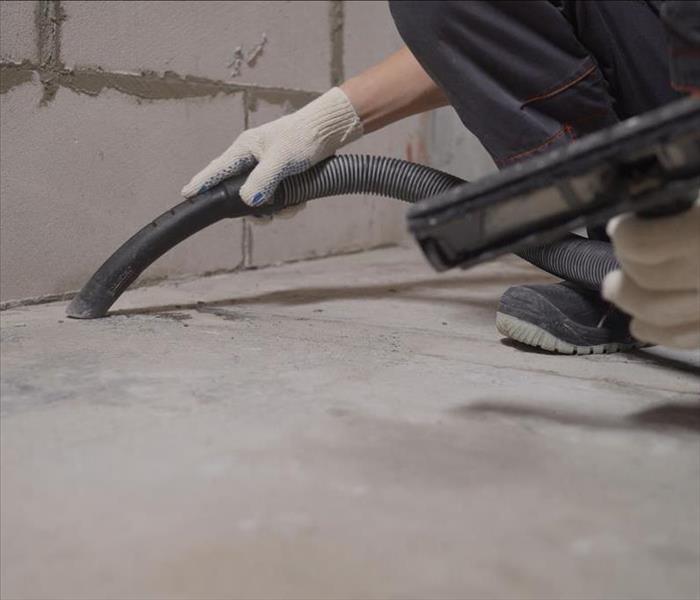 Follow these tips and Keep Your White Bear Lake, MN Construction Site Protected Against Water Damage.
Follow these tips and Keep Your White Bear Lake, MN Construction Site Protected Against Water Damage.
As a project manager, encountering water damage at your construction site can be anxiety-provoking, to say the least. It can be extremely costly, not only for expensive supplies but also for plumbing issues such as performing a water pipe repair. Fortunately, there are a few relatively easy ways to ensure that your White Bear Lake, MN site is protected against various types of water incursion.
What Are Some Common Problems and How Can I Avoid Them?
Whatever type of construction you're performing, there is always a risk of sustaining water damage. There are several precautions to take from the beginning that can significantly reduce the risk of excess moisture.
1. Confirm Proper Site Drainage
If your construction site has improper drainage, water can pool around the work area, causing damage. To prevent this pooling, you can grade the land to better drain the site or you can create drainage systems using drainpipes and drain screens.
2. Ensure Secure Pipe Fittings
Faulty drain and pipe fittings can develop a leak issue sooner or later. A thorough inspection can further prevent a leaky, broken pipe. If you want to ensure a much small risk of leaks, soldering the pipe joints is much more solid than crimping.
3. Secure Every Building Opening
Buildings under construction can have many open areas where rainwater can enter the structure. Stairwells, elevator shafts, open windows and doors, and unfinished roofs can allow water to come in but not dry quickly. Installing and maintaining temporary roofs are an ideal option for securing these openings until they're entirely constructed. Keep an eye on these quick fixes to ensure they are sufficiently waterproofing them.
4. Prevent Pipes From Freezing
Unprotected pipes in cold climates can develop frozen water inside, eventually causing them to expand and burst. Freezing pipes can cause significant property damage, requiring expensive water pipe repair. You can wrap the pipes in insulation or heat tape to avoid this problem.
5. Test All Suspect Areas
Before leaving an area susceptible to water intrusion, test the areas to make sure they are water-tight. Doing this can prevent the surprise of discovering a flooded site when you return the following morning.
6. Make Sure Important Materials Are Properly Stored
In addition to protecting the structure's interior, it's essential to protect your sensitive equipment like computers and vital documents. Keep these items in waterproof containers or under thick tarps or large plastic sheets.
7. Check All Water Delivery and Drainage Systems
Construction sites often contain several systems that present the risk of water damage. These systems include plumbing, fire protection and drainage systems. To lower the risk of any water issues, make sure you have quality systems, have professionals install and inspect the systems, watch the systems closely for a while after charging them.
The potential for a flooded construction site is nothing to take lightly. Not only can it cause a delay in progress, but it can also cause the need for professional work such as water pipe repair or the services of water damage restoration specialists.
Begin implementing these suggestions for your next job to ensure a smooth-running construction project from start to finish.
5 CDC Recommendations for Reducing COVID-19 Exposure at Work
1/14/2022 (Permalink)
 To reduce COVID-19 exposure within your workplace, it's important that all employees wear masks.
To reduce COVID-19 exposure within your workplace, it's important that all employees wear masks.
When faced with a virus that passes very easily from person to person and from surface to people, how can you keep your employees safe from coronavirus exposure? The Centers for Disease Control and Prevention have some recommendations:
1. Implementing Procedures for Social Distancing
The CDC recommends maintaining about six feet between individuals. This is because respiratory droplets can spread from one person to another through normal talking during conversations. The six-foot distance reduces the chance for droplets to get into the mouth or nose of the other person.
2. Encouraging Employees To Wear Masks
When infected people wear a mask, they reduce the spread of their droplets onto surfaces or other people. Because it isn’t always clear when a person has been infected, it’s important that all employees wear masks or other cloth face coverings.
3. Improve the Ventilation System
Droplets carrying the virus can be circulated through the building when heating or cooling systems aren’t appropriately filtered. Limit coronavirus exposure by updating and improving the ventilation system in the workplace.
4. Hire Professionals To Clean and Disinfect
Choose a commercial cleaning firm with experience, training, and the personal protective equipment necessary to adhere to FDA-approved guidelines and safety procedures. These professionals should also have access to the disinfectants approved by the FDA for use in coronavirus cleanup efforts.
5. Encourage Correct Handwashing Procedures
Post charts or memos that encourage employees and clients or customers to wash their hands for at least 20 seconds, using soap and water. When soap and water aren’t available, provide hand sanitizer, such as near computers.
Your Efforts Affect Communities
These steps can go a long way toward reducing coronavirus exposure in your White Bear Lake, MN, workplace. The more you know about how the virus spreads and what is involved in covid-19 cleanup efforts, the better you can protect your employees, clients, customers, and families from getting the virus and spreading it throughout the community.
5 Steps in Sprinkler Maintenance and Accidental Discharge Prevention
1/13/2022 (Permalink)
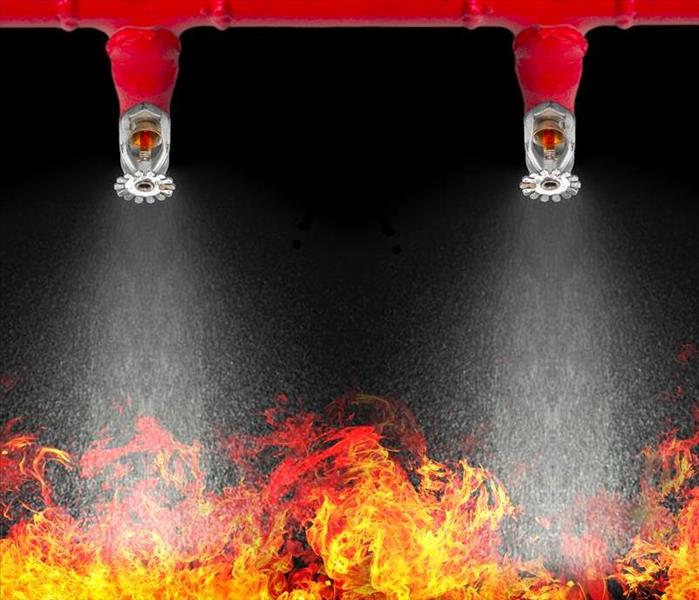 Consider these steps as regards Sprinklers Maintenance and avoid Accidental Discharges.
Consider these steps as regards Sprinklers Maintenance and avoid Accidental Discharges.
One of the big causes of damage to commercial properties is the accidental activation of fire sprinklers. The cost of repairing the water-logged property in North St. Paul, MN is much more than the cost of sprinkler maintenance.
The amount of water and water pressure that flows from fire prevention systems leads to thousands of dollars of damage. Because these systems are critical in preventing fire damage, it is essential that the heads and every other component are in good working condition.
How Sprinkler Maintenance Prevents Accidental Activation
One of the first steps in sprinkler maintenance is understanding the causes of accidental discharge. With this understanding, you'll be ready to take steps to avoid activation and prevent costly damage. Many heads are triggered by high temperatures. This heat either causes a metal link to melt or a glass bulb to burst. This leads to a rush of water. The simple mechanisms that provide a reliable response to fire also leave the system susceptible to untimely activation:
1. High Temperatures From Sources Other Than Fire
Any heads situated near light bulbs, cooking equipment, skylights, heating vents, and other sources of heat may discharge. Temporary sources of heat, such as construction equipment and high-powered lights are common sources of high temperatures. The solution to this problem is careful, preventative calibration of sprinkler heads. Part of routine system maintenance should include making sure that each head and its calibration is appropriate for the head's position and exposure.
2. Freezing Temperatures
A sudden drop in temperature won't activate a sprinkler head, but it can put enormous pressure on the pipes when the water inside freezes and expands. Even if a small part of the system is exposed to icy temperatures, pressure from the developing ice inside the pipes can cause broken components, cracked pipes, and forced valves. Preventative maintenance includes professional antifreeze solutions, added insulation, and building repairs such as sealing any cracks and gaps around doors and windows.
3. Rust and Corrosion
These sources of damage are a consistent concern for professionals in the fire protection industry. This is because the mix of water, oxygen, and iron is the perfect recipe for electrochemical corrosion. When this happens inside the pipes, it's hard to detect and prevent holes along the system. Routine testing is necessary to prevent unwanted discharge and, worse, failure of the system during a fire.
4. Mechanical Damage and Defects
This is one of the most common causes of accidental sprinkler activation. You may tighten a head too much or bump into a system component with a forklift. Sometimes, the simple passage of time and the resulting wear and tear can lead to worn parts. Routine inspections and professional replacement of parts can prevent unexpected gushes of water. Head guards are available that protect sprinkler heads from being bumped and broken.
5. Deliberate Sabotage
Whether it's a cigarette or match held up to a head or deliberate damage to the fire sprinklers, purposeful sabotage of the system is a leading cause of accidental discharges. The installation of head guards, putting sprinklers in hard-to-reach areas, and upgrading to industrial-strength components are some of the best ways to prevent sabotage.
Every minute following accidental activation can lead to thousands of dollars of professional water damage and restoration. Routine sprinkler maintenance and testing is the best way to ensure a system that works well and doesn't activate when it shouldn't.
Why Call SERVPRO for Coronavirus Cleanup?
12/20/2021 (Permalink)
 Disinfect and clean your White Bear Lake, MN commercial, and prevent Coronavirus.
Disinfect and clean your White Bear Lake, MN commercial, and prevent Coronavirus.
Coronavirus exposure is a serious concern for property owners in White Bear Lake, MN, and the struggle to prevent spreading contamination affects employers, employees, clients, and renters in many ways. Data suggests that the disease can spread as surfaces are exposed to the virus and people touch the same surfaces as long as a week after initial contamination, although the primary means of contamination is from one person to another through personal contact or droplets from coughs and sneezing. With concern for the people living and working on their property, many property owners are reaching out to property cleanup professionals for help.
How Does SERVPRO Proactively Clean for Coronavirus?
SERVPRO is a clean-up and restoration company with more than 40 years of experience. In response to the global virus, SERVPRO professionals are receiving updated guidelines and appropriate resources.
- Customers can expect the same adherence to the highest cleaning and sanitation standards.
- All coronavirus cleanup efforts are completed in accordance with information from the CDC and local authorities.
- The company's proprietary cleaning agent is certified by the EPA and has demonstrated effectiveness against viruses that are similar to COVID-19.
So far, there's no evidence that proactive cleaning will protect properties from new contamination as infected people move in and out of buildings. Experts are still testing disinfection products to find the best results.
Does Thorough Disinfecting Efforts Prevent the Virus?
Across the United States, SERVPRO is widely recognized as one of the top choices in cleanup and restoration. When qualified representatives perform proactive COVID-19 cleanup tasks, they may disinfect counters, desktops, light switches, doorknobs, bathroom fixtures, telephones, and other surfaces. Property owners must understand that the risk of coronavirus exposure is ongoing. As people come and go, there are many opportunities for surfaces to become contaminated again.
Recovery From Coronavirus Requires a Community Effort
Property owners can reach out to local authorities to learn the steps that individuals can take to slow the spread of coronavirus exposure. For effective results, property owners must work with the people in their buildings, professional cleaners, and local authorities for a united front against further exposure.
Flood Damage Prevention Tips
6/22/2021 (Permalink)
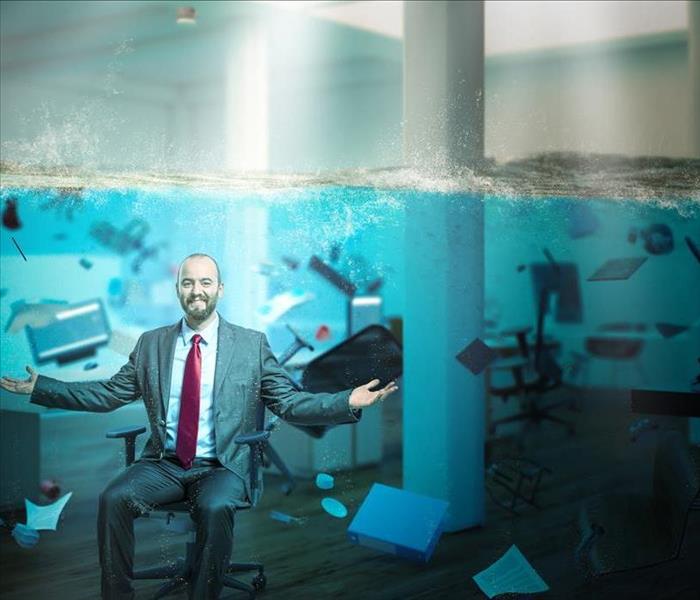 Flood prevention can save you a lot of time and money.
Flood prevention can save you a lot of time and money.
After a heavy storm hits North St. Paul, MN, your property may have some damage due to flooding. While certified storm mitigation experts can help you clean up the mess, the best course of action is to prevent as many problems as possible to begin with. Here are some tips on storm preparation to help you avoid damage in the first place.
3 Tips on Storm Preparation
1. Barriers
There are certain areas of your building that are especially prone to flood damage:
- Windows
- External doorways
- Loading docks
Essentially, any space that can be opened is more vulnerable to water entry. Using sandbags or other barrier methods can stop the flow of water into your building. Even if it doesn’t completely block floodwaters, it can slow it down enough to prevent a lot of damage.
2. Landscaping
You can’t always prevent flooding. It is possible, however, to divert most of the water away from your building through creative landscaping strategies. Your landscape architect can show you good locations for trenches and can recommend ground cover that can slow water flow toward your building considerably.
3. Organization
Many items in commercial buildings get storm damage simply because they are in the wrong place at the wrong time. Water can destroy equipment, furniture and important files. Elevating particularly vulnerable items just a few inches off the floor can make a big difference. Digitizing your most important documents is also a way to safeguard them against the risk of floods. Cloud storage means that your business won’t lose information even if the hard copies are destroyed.
No matter how careful you are, you may still have some water damage in your building after a heavy storm. That doesn’t mean that you are completely powerless against flooding, though. Sandbags and trenches can prevent a lot of the water from getting in, and some tweaks in your organization can protect items from minor leaks that occur. Taking a few extra precautions can save you a lot of time and money after a flood.
5 Tips for Cleaning After a Pipe Bursts
5/25/2021 (Permalink)
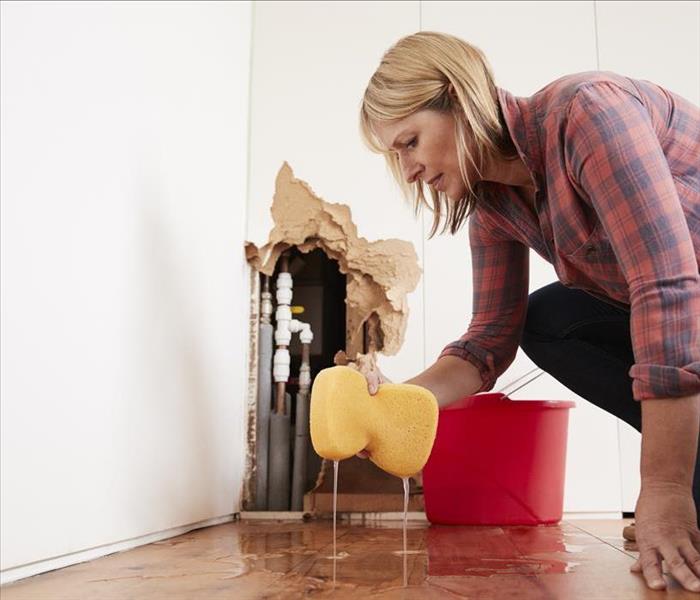 A bursting pipe needs to be treated immediately to avoid further damage.
A bursting pipe needs to be treated immediately to avoid further damage.
Discovering bursting pipes at your North St. Paul, MN, commercial building can be a devastating discovery. Depending on the size of the leak, possibly hundreds of gallons of water could be flowing through your building. It's essential to stop the water and fix broken pipe immediately.
Tips for Bursting Pipe Cleanup
1. Turn Off the Electricity
Before you do anything else, you must turn off the electricity at the breaker box. If you can't safely navigate to the box, call the utility company to shut it off. Until it's shut off, electricity could be flowing through the standing water.
2. Extract the Standing Water
Every minute counts. Next, you must extract all standing water as swiftly as possible to avoid additional loss. It's helpful to always have a wet/dry vacuum on hand for such situations, as one of these machines will get rid of the water and small debris quickly and safely.
3. Remove Affected Contents
Remove all items soaked by the water from the bursting pipes. In addition to furniture, paper and other porous materials, this could include wet drywall and soaked carpet and padding.
4. Separate Salvageable Items
Anything that you can thoroughly dry within 48 hours will probably be salvageable. Materials that you can't dry completely are susceptible to mold growth, and you will likely have to throw them away.
5. Dry the Affected Area and Contents
Finally, the affected area and remaining contents will need to be dried as quickly as possible. You can open windows and doors if the outdoor humidity is less than the indoor humidity. You can also run heaters, fans and dehumidifiers to help the drying process along. Hiring water damage remediation professionals can significantly benefit you, as they have industrial equipment and years of expertise.
When you're dealing with bursting pipes and water damage in North St. Paul, MN, time is of the essence. Take action promptly to stop the water flow, repair the pipes and begin the drying process.
How To Mitigate Wind Damage?
4/15/2021 (Permalink)
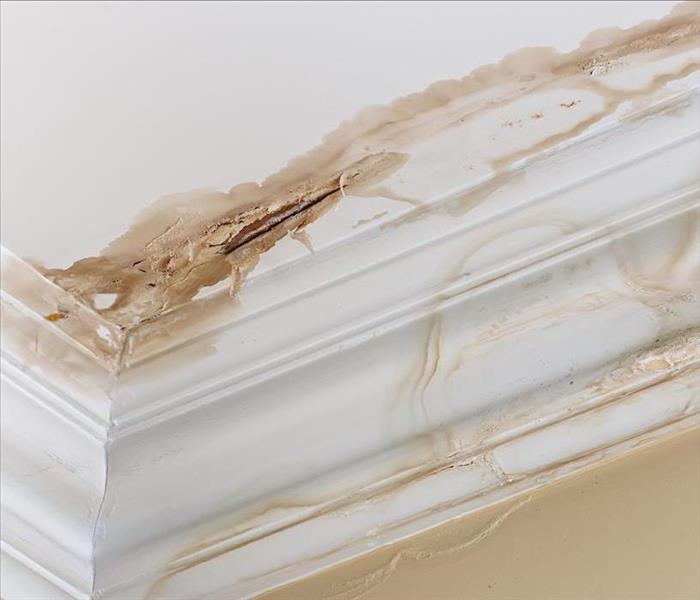 Roof leak can lead to water damage on your ceiling.
Roof leak can lead to water damage on your ceiling.
Many people do not understand the damage that a simple roof leak or another water incursion can create. The only way to prevent this damage in North St. Paul, MN, is through wind damage mitigation efforts. As a business owner, it is important to know what is necessary to stop wind damage before it starts.
Wind damage mitigation consists of using:
- Water barriers
- Roof-to-wall anchors or roof-to-foundation anchors
- Window and door barriers
Knowing what these are and how to utilize them can save you from calling a damage remediation company.
Steps to Mitigate Wind Damage
Water barriers
When talking about wind damage mitigation, water barriers most often refer to a sealed roof deck. This prevents water from coming in when the shingles are blown off during a storm.
Missing shingles are not the only thing you have to worry about when creating a barrier. You should also make sure that you waterproof the soffits and anywhere else that water could enter the building.
Creating solid water barriers prevents water from entering your business and damaging vital equipment.
Roof-to-Wall or Roof-to-Foundation Anchors
If you own your building, this is an important step to avoiding a roof leak and keeping your roof where it should be. During a storm, wind can slip under the roof, causing the roof to lift. Having an anchor system will help prevent this from happening.
If not anchored properly, sections of the roof may lift and break, allowing water to damage your equipment, walls, inventory and floors.
Window and Door Barriers
Window and door barriers won't help you if you have a damaged roof but help prevent water from coming in during a flood. You can use temporary shutters, weatherproof glass or plexiglass for windows and sandbags or stormproof doors for your doors. Many security doors also serve as weather guard doors. Check with the manufacturer to see if the doors of your business are weatherproof.
A roof leak or flooding from windows and doors can be devastating to your business. Fortunately, there are steps you can take to mitigate storm damage before it becomes a problem.
How To Clean Furnace Puffback
3/26/2021 (Permalink)
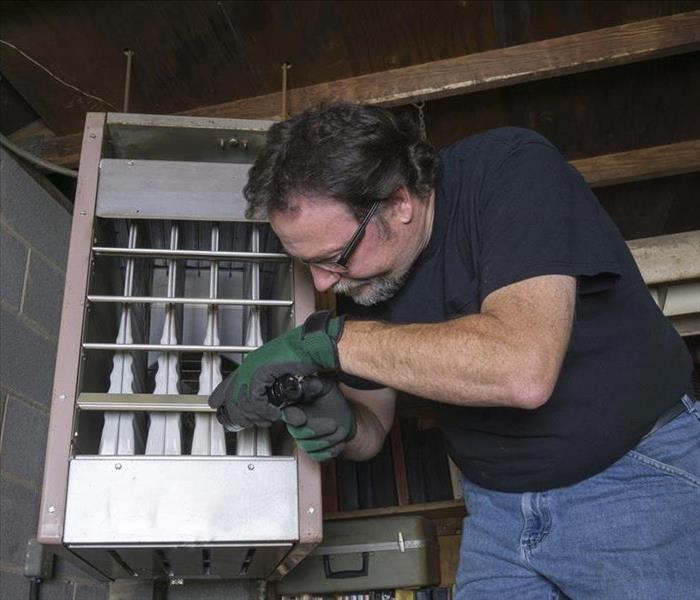 Fix furnace issues.
Fix furnace issues.
The furnace in your commercial building in North St. Paul, MN, is an integral part of keeping your whole building warm and comfortable. When it burns out, you certainly want to get it fixed as soon as possible. It's also important that you don't ignore the puffback damage that the malfunctioning furnace may have caused.
Furnace Puffback Cleanup
Call Cleanup Experts
Even with proper maintenance, parts of your oil furnace are likely to wear out and stop working over time. When this happens, you may notice a sooty substance on the wall and floor surrounding it. This is called puffback, and it needs to be cleaned by fire restoration specialists. These certified technicians have the tools and training needed to complete all parts of the cleanup process:
- Assessment of damage
- Building test to determine extent of spread
- Thorough removal of tar and soot
- Repair or replacement of damaged materials
Proper cleanup takes more than just wiping away the furnace puffback that you can see. Trust the professionals with the necessary knowledge and skills to ensure that the mitigation process is thorough.
Fix Furnace Issues
You also need to hire someone to fix the furnace that caused the problem in the first place. After all, it doesn't do you any good to clean up the puffback damage if the conditions that created it persist. Your insurance provider will likely ask you to prove that you have taken the steps to remedy both the cause and the effects of furnace mishap before the company will approve your claim. Repairing or replacing the furnace may seem costly but there will likely be fewer out-of-pocket expenses in the long run if you take care of it in a timely manner.
A worn-out furnace can cause a lot of problems in your commercial building. Puffback damage from the overworked furnace must be cleaned by restoration professionals so that your building can get back to normal.
Enjoy Spring With a Flood Prevention Plan
2/11/2021 (Permalink)
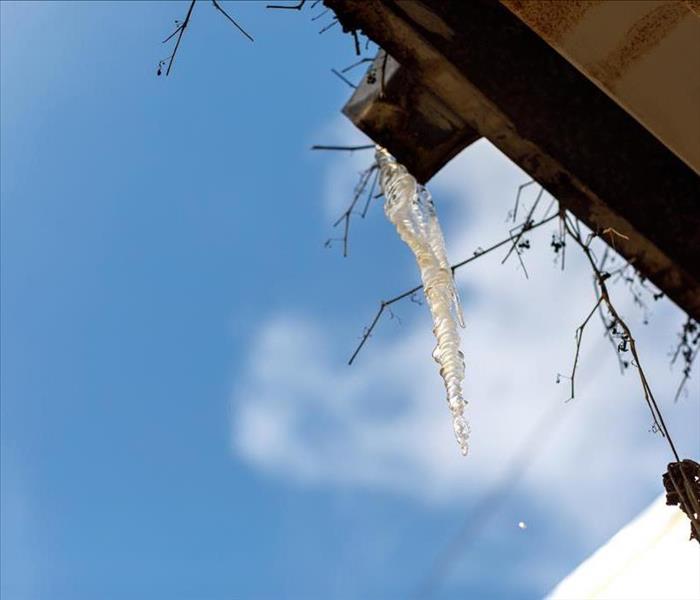 Remove snow and ice from your roof.
Remove snow and ice from your roof.
When spring temperatures signal the close of winter, many White Bear Lake, MN, business owners and customers look forward to getting outside and enjoy the sunshine. It's important to recognize, however, that the spring thaw often leads to flooding. Fortunately, there are several steps you can take to prevent a visit from your local water damage repair company, starting with fall and winter chores.
Steps to Prevent Spring Flooding
- Keep runoff points, such as rain gutters, free of snow and ice.
- Insulate any pipes on or near the exterior of your buildings.
- When shoveling snow, pile it up away from the foundation of your building.
- Arrange for snow and ice removal for the protection of your roof and rain gutters.
- Complete sump pump maintenance to be sure the pump can handle rising water levels from a frozen pipe or spring flood.
The care you take in doing these tasks before the spring thaw are effective ways to protect your building if floodwaters do rise.
Turn Your Attention Outside
After making sure that you won't suffer from a frozen pipe on your property, you can turn your attention outside. For example, if there's a street drain on or near your land, such as in the parking lot, take time to clean it off. When water isn't allowed to run freely, the resulting overflow could cause damage to your property. Pay similar attention to the gutters around your property.
Take a Community View
After all your preventative methods, there may still some risk of flooding in your community. Prepare for this eventuality by stocking up on sandbags. If water begins to accumulate due to melting snow or other causes, position sandbags where they can prevent water from getting into doorways, basement windows, and other openings around your foundation. You may also want to reach out to community leaders if you recognize issues that should be addressed by road crews, etc.
It isn't unusual for the spring thaw to lead to flooding, but this doesn't mean that your business needs to suffer. Your preventative actions in the fall and winter and ongoing actions can set your mind at ease.
How To Create an Office Fire Evacuation Plan
1/20/2021 (Permalink)
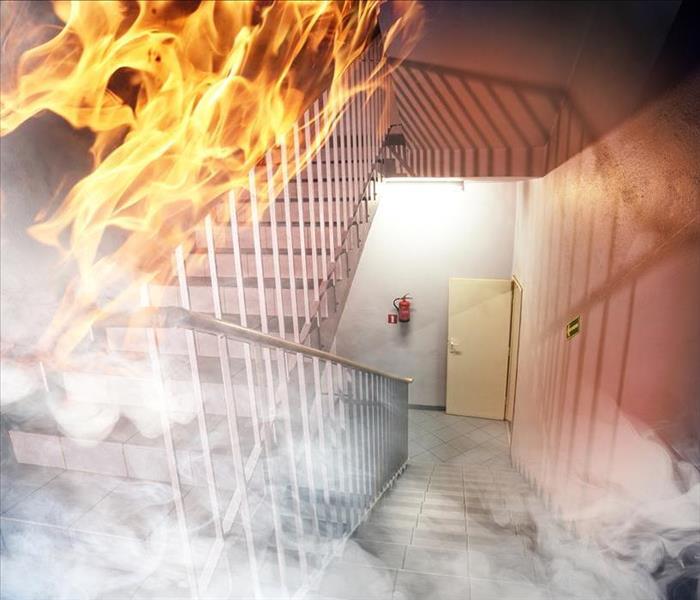 Create a proper fire escape plan
Create a proper fire escape plan
Your employees are your most valuable asset. Where would your North St. Paul, MN, business be without them? A fire escape plan is essential for your people and property; a fire can start virtually anywhere at any time. Devising an emergency escape plan doesn’t have to be complicated.
5 Points to Include in Your Fire Escape Plan
Here are the most critical points to include in your plan:
1. Consider Various Scenarios
No one can prepare for every possible scenario, but it is essential to be ready for as much as possible. Fire damage experts suggest considering the types of fires most likely to threaten your business. Maybe it’s cooking appliances in the breakroom, employees’ portable space heaters or something more industry-specific. Then, brainstorm “ what if” scenarios. When you and your employees are prepared for various scenarios, it’s no longer viewed as “the unimaginable.” Everyone will know the procedure.
2. Assign Roles and Responsibilities
Roles and responsibilities should be established to have leaders to which others can look for guidance during an emergency. A clear chain of command should be created, along with backups.
3. Plan Escape Routes and Gathering Areas
A fire escape plan should always have primary and secondary escape routes marked. In addition to posting maps of the exit routes, ensure that all the exits are clearly marked. Designate areas for employees to assemble after evacuating the building. Make sure the area can safely accommodate everyone a safe distance from the building.
4. Inspect Equipment and Train Proper Use
Ensure that all your emergency equipment is up-to-date and in proper working order. Your staff should also know where all the emergency equipment is and how to use it properly.
5. Perform Fire Drills
Regularly rehearsing fire drills can help decrease confusion and make evacuation techniques almost second nature. This will ensure that everyone can get out as quickly and safely as possible.
Creating a proper fire escape plan is crucial for your employees and business. Keep your employees aware and all of your emergency equipment maintained regularly. This will ensure that your evacuation plan is operated as safely and efficiently as possible.
3 Potential Problems From Frozen Pipes
12/17/2020 (Permalink)
 Frozen pipes can lead to water damage.
Frozen pipes can lead to water damage.
Commercial properties, such as warehouses, are prone to wintertime damage. It is crucial to maintain facilities before and during the coldest months of the year. Failure to do so can result in significant damage to a building's functionality, especially its plumbing systems. Frozen pipes can lead to at least three costly water damage issues for business owners.
3 Costly Water Damage Problems From Frozen Pipes
1. Pipe Bursts
Frozen pipes often lead to broken pipes. As the water freezes in the line between the water source and the closed faucet, pressure builds. If the pressure from the expanding water is not released or resolved quickly enough, it can lead to splitting and bursting lines. Depending on the occupancy of the building at the time of the break, significant flooding can occur.
2. Dangerous Outdoor Conditions
Sometimes, the frozen and failed pipe is outside of a building, and water damage may go unnoticed by people inside. If the leak persists long enough in cold conditions, the leaking water will freeze over, compromising workers' and customers' safety. If people fall on your commercial property, the company is likely liable for damages.
3. Costly Structural and Inventory Damage
When a break occurs inside the facility, there are questions of structural issues and ruined inventory. A burst pipe can lead to significant flooding in only a few hours. If the facility is left alone for several days, there is no telling the extent of the damage. When the problem occurs inside, hiring a water cleanup service in North St. Paul, MN, is likely your best bet.
Commercial warehouses are prone to pipe freezes, which means having a proactive mitigation and prevention plan in place is necessary. Do not risk the expense and business interruption of water damage from frozen pipes. Prepare your company for the worst case, so you never face it. Use the tools and people at your disposal to figure out a gameplan for this winter.
How To Protect Pipes When Storms Bring Freezing Temperatures
11/13/2020 (Permalink)
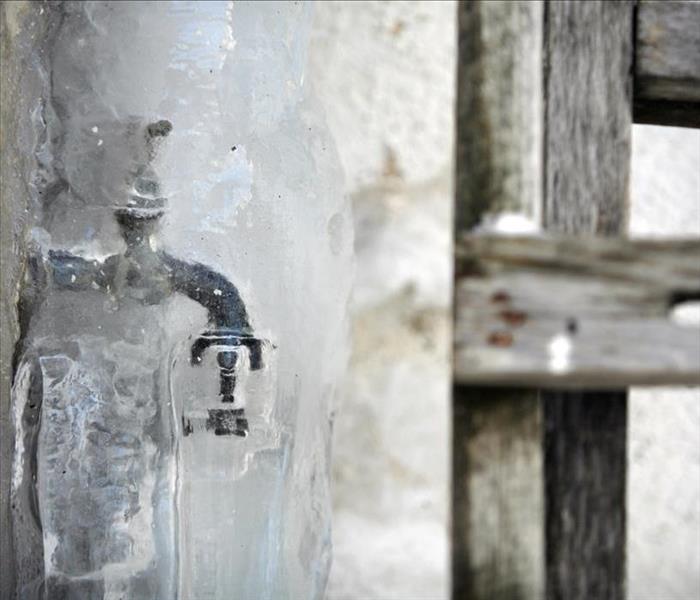 Pipes that are exposed to the weather can freeze and cause water damage.
Pipes that are exposed to the weather can freeze and cause water damage.
In conversations about storm damage in North St. Paul, MN, people generally think about rain and how that much water could impact their businesses. However, rainstorms aren't the only sources of storm-related water damage. Another common occurrence is damage, such as a burst pipe, that takes place after winter storms bring a drop in temperatures.
Why Are Frozen Pipes a Problem?
When wintry temperatures come around, the freezing weather causes standing water and fluids in the pipes to freeze. Why is this a problem?
Water expands as it freezes.
Expanding water puts a lot of pressure on pipes.
Metal, plastic, and other pipe materials can't stand up to the pressure, so they break.
No matter how tough the pipes and other components of your water and sewer system, they cannot withstand the pressure of expanding water.
How Can You Avoid Frozen Pipes?
The good news is that you can take a few simple steps to avoid a frozen pipe on your commercial property:
- Identify the pipes most likely to freeze. For example, any pipes on the exterior walls or that are exposed to the weather.
- Avoid a burst pipe by draining water out of hoses, swimming pools, and sprinkler systems.
- Keep external valves open, so that any water can drain out or expand without causing pipe damage.
- Add insulation around exposed pipes, both inside and outside.
- Look for areas on the property that may be susceptible to standing water.
- Maintain a consistent temperature in rooms where pipes run, even during the night and over weekends.
As you learn more about the vulnerability of your pipes, take extra steps to protect them from freezing.
What If Pipes Still Freeze?
Occasionally, you may still experience a burst pipe even after taking precautions. When this happens, contact a water damage cleanup and repair professional. If mistakes are made during the thawing process, you may inadvertently cause further damage. After contacting professionals, keep faucets open and try to find the section of pipe that has frozen. At this point, you can begin thawing the pipes as you wait for technicians to arrive.
3 Reasons To Call a Water Restoration Service
10/16/2020 (Permalink)
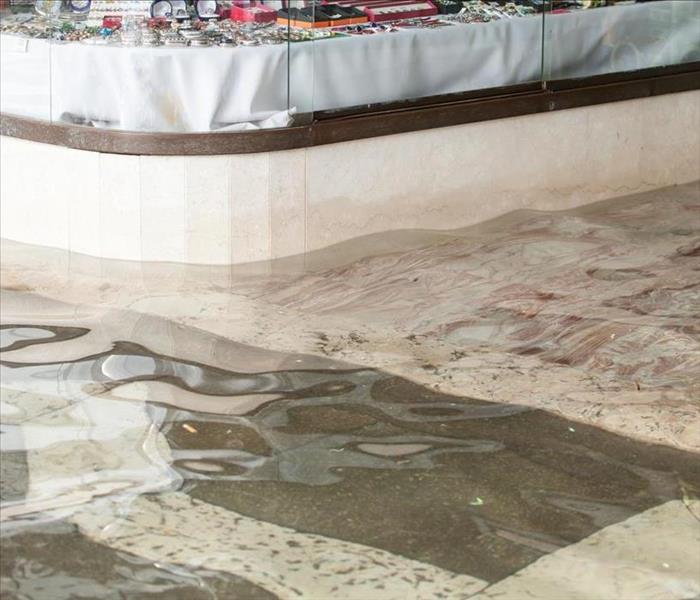 It would be best if you trusted experts in many instances.
It would be best if you trusted experts in many instances.
As a business owner, the objective is to place profits over losses, which often means using talented people, already under your employ, to resolve problems rather than contracting out. Unfortunately, not every building problem can or should be handled in house, like pipe burst cleanup. It would be best if you trusted experts in many instances, like a water restoration service in North St. Paul, MN. There are at least three instances where it is best to contract out repairs.
Instances Where It Is Best To Call a Water Restoration Service
- Overwhelming damage
- Sewer or black water
- Mysterious cause
Overwhelming Damage
Pipe breaks or floods often lead to a significant amount of damage to your property and equipment. In most cases, an insurer will require the use of a remediation service or other professional to resolve the problem. Beyond insurance requirements, when dealing with a pipe burst cleanup, it is crucial to assess the damage to the facility's structural integrity and its systems; standard maintenance personnel may not possess the required skills or knowledge.
Sewer or Black Water
Under no circumstances should you or your team members attempt to clean up black water or sewage. Many states have regulations establishes who can clean up such a disaster and how. A mitigation or sewer cleanup company will possess the appropriate knowledge and certifications to complete such a task legally and up to building codes.
Mysterious Cause
Sometimes, water damage will not be as apparent as a broken pipe. Walls or other structures or equipment can hide the underlying cause of water damage. A restoration service will have the necessary tools and expertise to find the source of the problem, resolving it quickly and allowing you to get back to business as usual.
While some building problems, like a pipe burst cleanup, are obvious, including their need for professional help, others are not. If you are uncertain of the need for professional intervention, then consider contacting a local water mitigation service for advice.
Common Commercial Water Damage Problems and Remedies
9/28/2020 (Permalink)
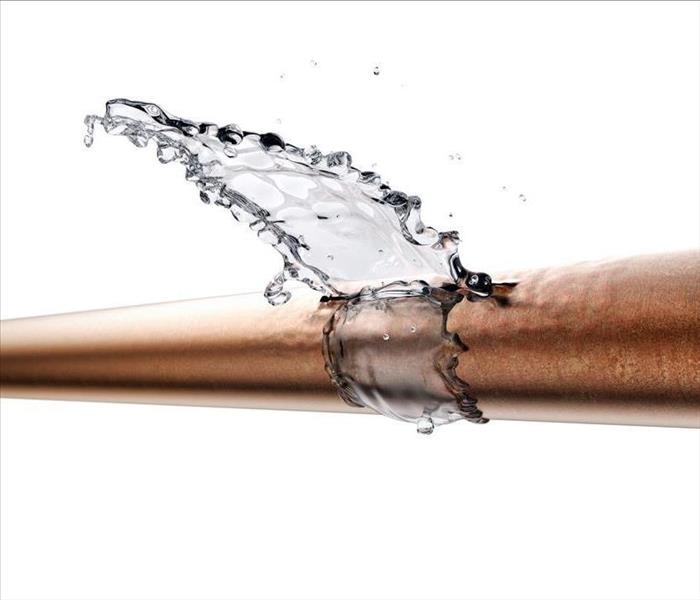 Bursting pipes can be a leading cause for commercial water damage.
Bursting pipes can be a leading cause for commercial water damage.
Whether your business in North St. Paul, MN has a broken pipe or another common issue that can lead to water damage, it’s often helpful to know how to react to prevent major damage from occurring. Knowing what problems commonly occur and how to react can help you prevent your business from sustaining water damage.
3 Common Problems That Cause Water Damage
1. Sewer Backups
Sewer backups are often caused by blockages, and backups can result in costly repairs. However, knowing the signs of a sewer backup can help you prevent your business from flooding. If a sewer is backed up, you may notice that your sinks or toilets aren’t draining as quickly as they should. If you do have a backup, it can be helpful to have a plumber inspect your sewer lines, and regularly having your sewer lines cleaned can help to prevent future backups.
2. Pipe Issues
While a broken pipe can cause a building to flood, a leaky pipe can also cause damage to a business. Often, you can temporarily fix a leaky pipe by sealing it. However, because a leaky pipe could be an indicator of other issues, you may want to have your pipes examined to ensure there aren’t any hidden problems. In the case of a pipe that is broken, turning off the water in your building is often the best solution.
3. Faulty Appliances
In addition to sewer systems and pipes causing water damage, appliances can also be the cause of water damage. Frequently cleaning your appliances can help prevent them from malfunctioning. However, if you do notice that an appliance is leaking, backed up or is simply not working as it should, knowing how to safely and quickly shut off the appliance can be helpful.
Understanding what water damage issues commonly occur in businesses and knowing what to do if you notice these issues can help protect your business. If your business has been damaged from a broken pipe or other problems, it can help to work with water repair experts.
How To Protect Your Roof After Fire Damage
9/28/2020 (Permalink)
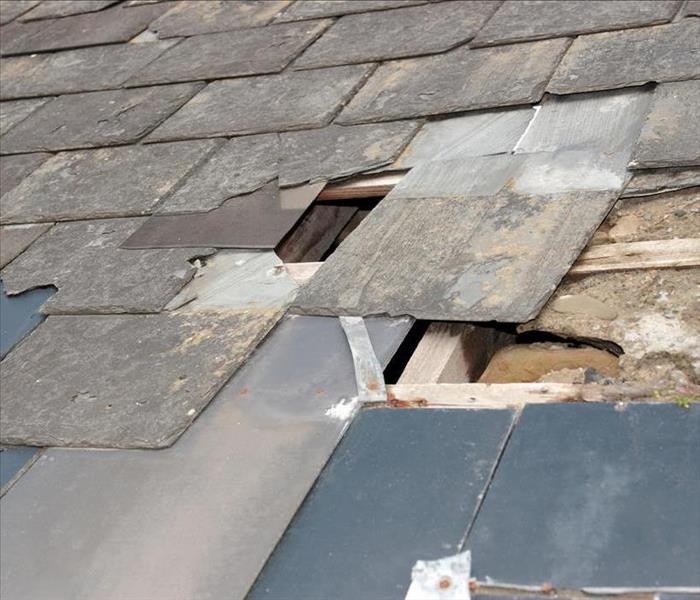 Secure the roof so that no further damage happens to your building.
Secure the roof so that no further damage happens to your building.
When a fire breaks out in your building in White Bear Lake, MN, one of your first calls will likely be to professional restoration services for fire cleanup. One of the first things they will do is secure the roof so that no further damage happens to your building. Having a tarp professionally installed on the roof can prevent excessive water damage from rain as well as keep extra dirt and debris from fall through to the attic.
Applying the Tarp
The benefit of having a tarp placed on your damaged roof by professionals is that you know it will protect your building while it's being repaired. Professional tarp services include the following steps:
- Anchoring a board to the roof
- Placing the tarp over the anchor board
- Applying a second board on top of the tarp to hold it in place
- Ensuring the tarp extends over the roof's edge
- Securing the boards and the tarp so they don't become detached
A tarp that is properly secured protects your building throughout the fire cleanup process by covering any holes created by the flames or resulting from the repair process itself. Technicians should replace the tarp whenever they are not actively working on the roof.
Preventing Damage
When your building needs roof repair, it becomes vulnerable to many outside elements. A rainstorm could cause significant leaking, which, if not remedied in a timely manner, can turn into a mold infestation. Debris can blow into the building from the holes in your roof. An unsecured roof can also be tempting to animals such as birds and squirrels that are looking for a place to nest. By covering the roof any time they're not working on repairs, your technicians help you avoid these problems.
Protecting your building from secondary damage is essential during fire cleanup. From assessing the problem to completing the restoration, experts are here to help.
SERVPRO Is Faster to Any Size Disaster
8/20/2020 (Permalink)
 SERVPRO Is Faster to Any Size Disaster
SERVPRO Is Faster to Any Size Disaster
When a catastrophe happens at your commercial property, it makes no difference if it’s a fire, flood or storm. What matters is how quickly you can recover your building. SERVPRO is faster to any size disaster.
More Services
SERVPRO offers a wide range of commercial assistance. If your building was recently hit by extreme weather or a similar disaster, SERVPRO can have a team on the scene immediately to provide an array of services:
- Fire damage restoration
- Water damage restoration
- Flood recovery
- Mold mitigation
- Storm damage restoration
SERVPRO can also lend a hand if your facility needs a thorough, professional cleaning. From chemical spills to biohazardous materials, your local recovery team has the tools and training required to safely disinfect and sanitize your space in keeping with the most up-to-date regulations and guidelines from the Centers for Disease Control. SERVPRO also offers defensive cleaning perfectly suited for restaurants and similarly high-traffic public spaces.
More Locations
SERVPRO is faster to any disaster for two reasons. First, it has over 1,7000 franchises across the United States. Finding the location nearest to White Bear Lake, MN, is as easy as calling 1-800-SERVPRO or clicking the "Locate a Local Franchise" button on the SERVPRO website.
Second, the professionals at your local SERVPRO office are on call 24 hours a day, 7 days a week, 365 days each year. Teams of skilled men and women are perpetually standing at the ready to begin the recovery effort at your commercial property.
More Credibility
The majority of insurance companies in the United States prefer SERVPRO. Your local franchise makes filing an insurance claim simple and stress-free. Pretesting, for example, is just one way that SERVPRO helps keeps costs down. Whenever possible, SERVPRO teams restore or repair instead of replace. They can also create detailed inventories and submit claims electronically for fast, accurate results.
SERVPRO is a local company with a national network. When the unexpected happens, it’s reassuring to know that you can count on its recovery teams to be faster to any disaster.
Fighting Mold and Secondary Damages
4/23/2020 (Permalink)
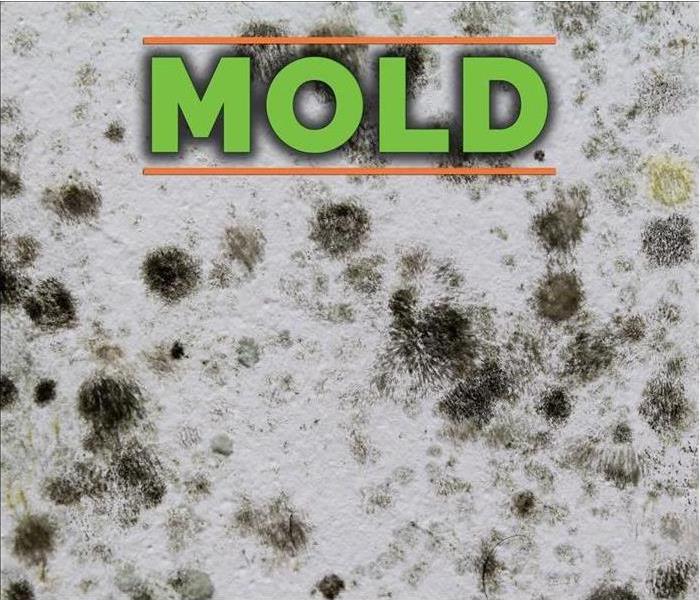 After suffering water damage in your commercial property in North St. Paul, MN you may suffer secondary damages.
After suffering water damage in your commercial property in North St. Paul, MN you may suffer secondary damages.
After floodwaters have receded from your North St. Paul, MN, commercial property, the risk of secondary damages sets becomes an issue. Unfortunately, the potential for hidden risks is significant, and even months after the water has completed dried away, there may ongoing effects. One of the most significant sources of secondary damage is the presence of black mold.
What's the Truth About Mold?
What is black mold? While it may not be quite as frightening as it's sometimes made out to be, there are still serious reasons to clean it up and prevent future growth:
- Many types of mold produce mycotoxins that can't be seen.
- Mold gives off an unpleasant musty odor.
- It is hard to get rid of mold stains from walls, ceilings, and other surfaces.
- When mold attacks wood beams, bricks, and wallboard, it causes a lot of structural damage.
The best way to be sure that secondary damage doesn't result from flooding is prevention. If there's high humidity throughout your property, contact a water damage remediation team to thoroughly clean and disinfect all areas affected by flooding and high levels of moisture.
How To Prevent Ongoing Damages?
Secondary damages are fairly common after bursting pipes, toilet overflows, sudden flooding, or heavy rainfall. The good news is that, in addition to the work of water damage cleanup and disinfection technicians, there are several steps you can take to limit further damage. These include inspecting your property for dripping or leaking water, areas of heavy moisture, and hidden damages. It's also important to provide proper ventilation to rooms that continually have a lot of moisture. As soon as you find any water or moisture, clean it up and thoroughly dry the area. With these efforts, you can keep recovery costs down and prevent future trouble.
Isn't the Danger Past?
Black mold often occurs when property owners believe that the danger is over when there's no sign of water. Unfortunately, hidden pockets of moisture provide excellent hiding places for mold growth. Protect your North St. Paul, MN, property by keeping an eye out for signs of water, mold, and further damages.

 24/7 Emergency Service
24/7 Emergency Service






















